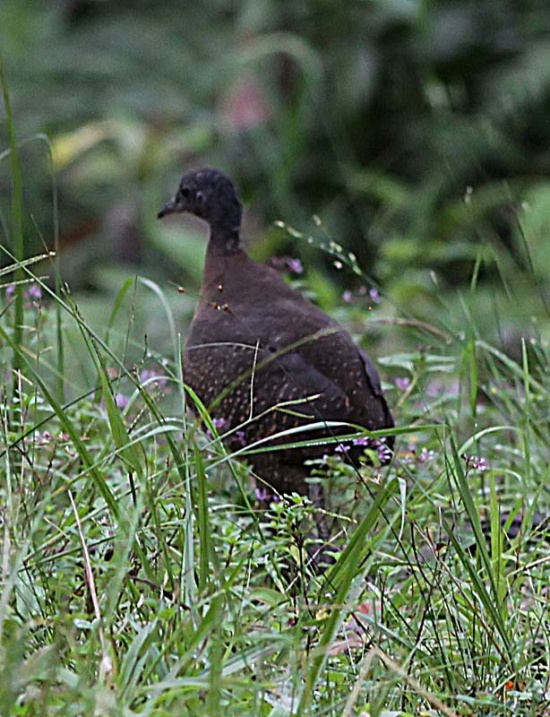
Nothocercus bonapartei
TAXONOMY
Nothocercus bonapartei Gray, 1867, Aragua, Venezuela. Five subspecies.
OTHER COMMON NAMES
English: Bonaparte’s tinamou; French: Tinamou de Bonaparte;
German: Bergtinamu; Spanish: Tinamъ Serrano.
PHYSICAL CHARACTERISTICS
15 in (38.5 cm), 2 lb (925 g). Mottled or barred with black and
cinnamon on back and wings. Throat is variable rufous color.
DISTRIBUTION
Colombia, Costa Rica, Panama, and Venezuela.
HABITAT
Tropical and subtropical forest, mainly above 5,000 ft (1,500
m), favoring damp areas, especially those with bamboo thickets.
BEHAVIOR
The call is loud and hollow, repeated many times, given by the
male from his home range, which he occupies throughout the
year.
FEEDING ECOLOGY AND DIET
Feeds on fallen fruits and small animals.
REPRODUCTIVE BIOLOGY
The male defends a small territory in his home range, attracting
one or more females with calls and a display known as “follow
feeding.” The nest, which may contain eggs from several
females in a clutch of four to 12, is concealed in ground vegetation.
Incubation is by the male alone.
CONSERVATION STATUS
Not threatened.
SIGNIFICANCE TO HUMANS
Hunted as a game bird; populations in Costa Rica and Peru
have declined as a result.
Photo Gallery of - Highland tinamou
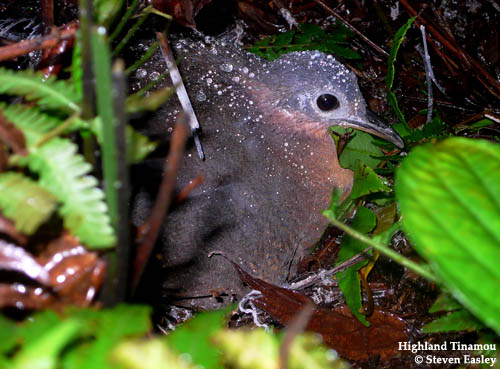
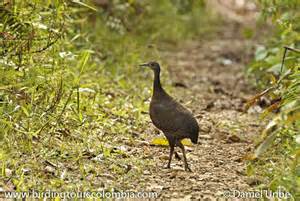
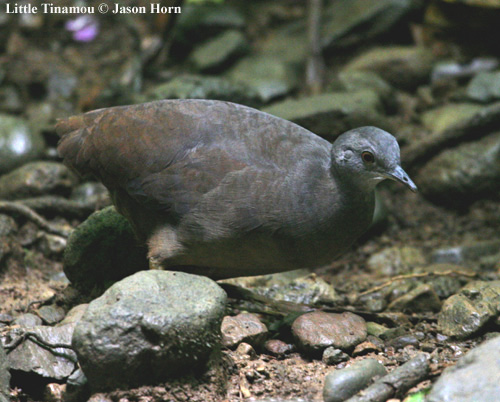
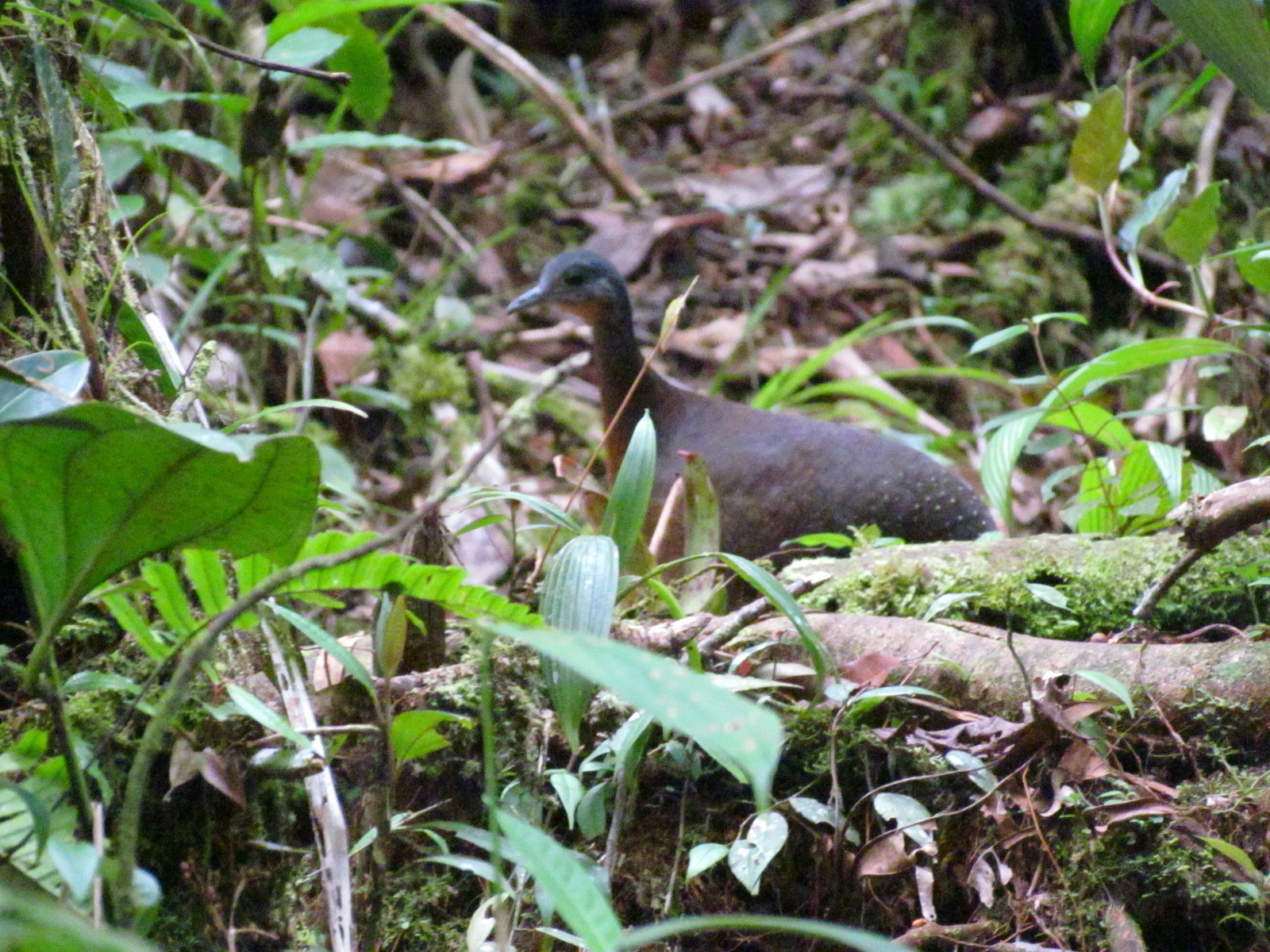
 Animalia Life
Animalia Life